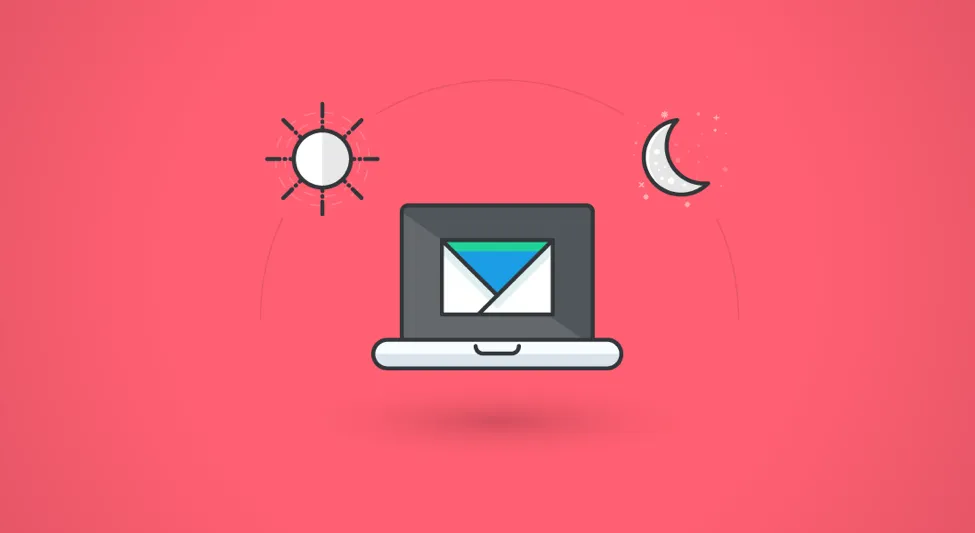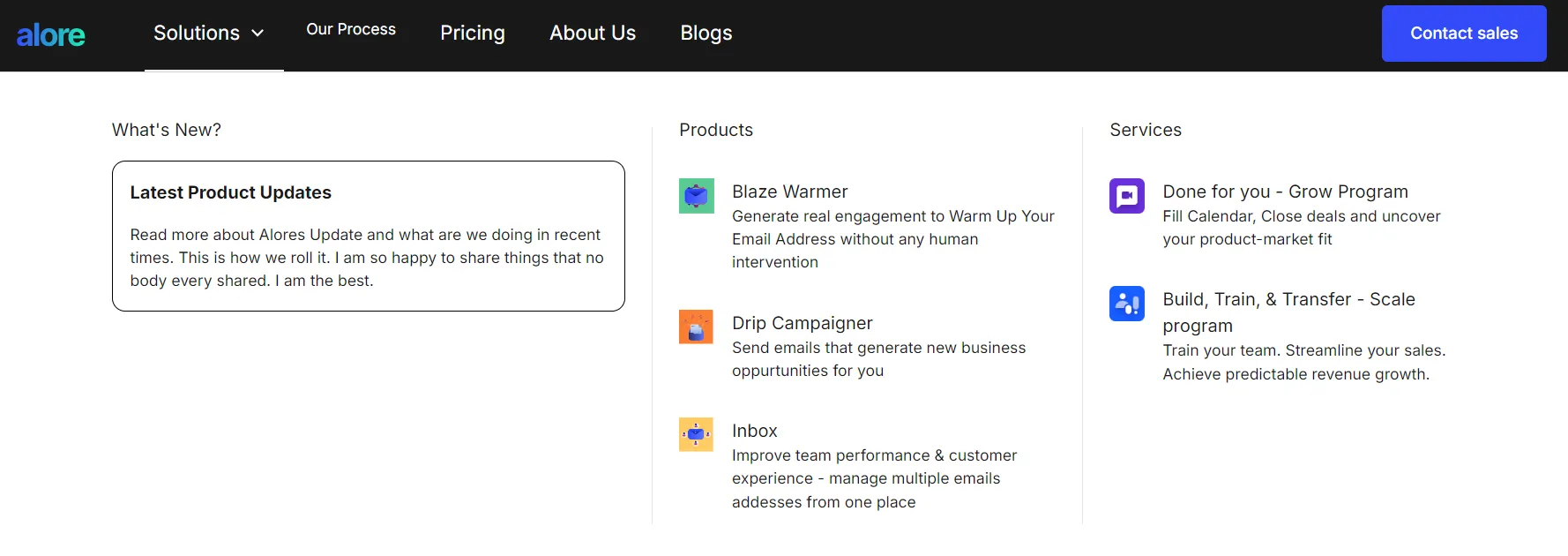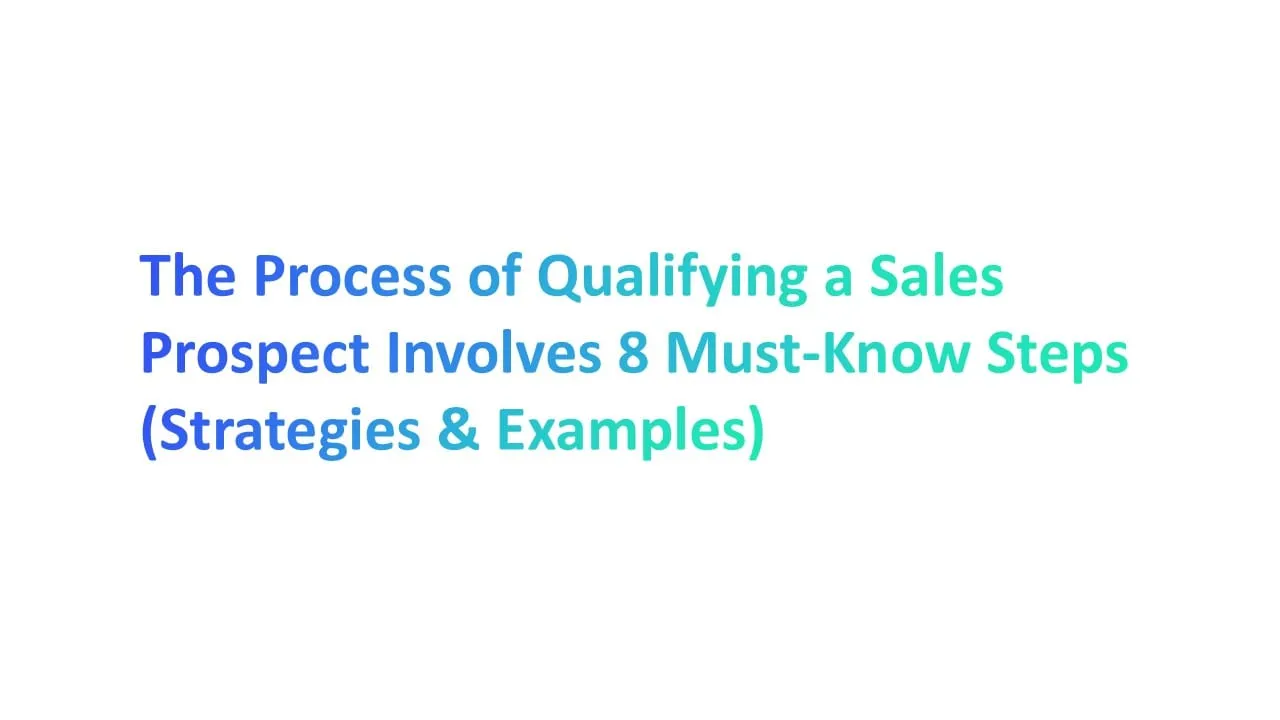Timing is everything when it comes to email marketing. Picture this: you've crafted the perfect email masterpiece, only for it to vanish into the abyss of your recipient’s inbox because it arrived at the wrong moment.
In this guide, we’ll uncover the best and worst times to send out an email to get a response in 2025, using data-driven insights to help you reach your audience when they’re most likely to engage.
From unlocking the magic of subject lines and audience segmentation to nailing the ideal days and times of worst day to send them, you’ll gain practical tips for increasing your open rates, click-through rates, and overall email performance.
Get ready to become the master of email timing strategy!
Why is it Important to Send Emails at the Right Time?

Finding the best time to send an email to get a response can make a big difference in how people interact with your messages. When emails arrive at the right moment, they’re more likely to be read, clicked, and remembered.
Here’s why timing is so important:
1. Improves Deliverability
- Sending emails at the right time helps them reach subscribers' inboxes rather than landing in the spam or cluttered inbox.
- Email providers check for signs of “spammy” behavior, and if your email marketing messages go unread, they may start marking your messages as unwanted.
- Sending emails when people are most active, like during peak times in the early morning or mid afternoon break, increases your chances of landing in the main inbox. Users decide to leverage specific email timings to improve open rates and ensure engagement.
"Ready to boost your deliverability? Try Alore’s Warm-up Campaign today!"
2. Reduces Unsubscribes
If your emails arrive too often or at times when readers are busy, they may feel overwhelmed and decide to unsubscribe.
Choosing the right day of the week and time to send email also shows respect for their schedule. This keeps people engaged with your emails rather than wanting to stop receiving them.
"Keep your domain healthy! Let Alore handle the checks and keep your emails secure."
3. Builds a Predictable Routine for Readers
Consistency in email timing can create a routine for your readers. When emails arrive at expected times, like after lunch or on a particular day, it builds trust.
Knowing when to expect email campaigns can also improve your click through rates and help establish you as a reliable source. This is especially useful if you have a target audience with specific habits or time zones.
Key Factors to Watch for While Sending an Email

1. Subject Line Precision
The subject line is the first thing people see, and it determines whether they’ll open your email. A precise and engaging subject line improves click through rates and open rates.
Why It’s Important: A well-crafted subject line can keep your email from landing in a cluttered inbox or spam. With the right wording, your email can stand out and lead to higher engagement.
- Keep It Short and Direct: Aim for fewer than 50 characters, as shorter subject lines perform better on mobile devices.
- Highlight the Value: Mention key points like “limited offer” or “only for you.” For example, “Exclusive 20% Off - Today Only!”
- Use Action Words: Phrases like “discover,” “don’t miss,” or “special invitation” can grab attention.
How to Implement: Experiment with different subject lines to see what works best for your target audience. Try using email subject line examples to get ideas and test what catches attention.
2. Timing and Frequency
Knowing the best time to send an email to get a response can make a huge difference. Studies show that early morning (8-10 a.m.) and the mid afternoon break (2-3 p.m.) are the peak time times for engagement. Also, Tuesdays, Thursdays, and Wednesdays generally see better response rates.
Why It’s Important: Sending emails at the right time helps avoid the risk of emails going unread due to bad timing or cluttered inboxes.
- Ideal Days for Engagement: Emails sent on Tuesday and Thursday often perform best. Thursday has gained traction among marketers as a reliable day for email campaigns.
- Peak Hours: For B2B emails, aim for the early morning. For B2C, afternoons work well.
- Avoid Over-Sending: Sending too many emails can lead to unsubscribes. Limit your frequency based on engagement data. Reducing the number of emails sent in a week can prevent audience fatigue.
How to Implement: Review your email marketing performance in Google Analytics or similar tools to identify when readers are most active.
Send time optimization tools can help you reach the subscribers’ inboxes at the most responsive times. To ensure you deliver emails successfully, check your sending frequency and audience preferences.
3. Recipients Industry
The industry of your recipient influences their email habits. For instance, people in healthcare may respond at different times than those in retail or tech.
Customizing your send times based on the recipient’s industry can improve click through rates and email engagement.
Why It’s Important: When you match email timing to the habits of each industry, you can reach your target audience more effectively and improve click to open rates.
- Segment by Industry: For retail, sending marketing emails on weekends may work best, while professionals in finance prefer weekdays.
- Adjust for Time Zones: Consider time zones so that emails land at optimal times for all readers, whether local or global.
- Match Content with Industry Needs: Send emails with content that speaks directly to industry-specific interests.
How to Implement: Use data driven insights from previous campaigns to see what works for metric groups as users in different industries. Track email engagement by hour to optimize for each group.
4. Segmented Audience Targeting
Segmenting your audience means dividing your email list into groups based on specific traits, like interests, purchase history, or location. When you send emails that feel more personal, people are more likely to open and engage with them.
Why It’s Important:
Targeting different segments lets you send the right content to the right people at the best time to send an email to get a response.
If you’re targeting a specific day of the week or time zone, segmenting helps ensure that emails land at times when people are most active.
How to Implement:
- Gather Data: Look at data about your audience’s behavior—when they open emails, what they click on, and what kind of content they respond to.
- Create Segments: Divide your list based on things like age, purchase history, and activity levels. For instance, if you’re targeting professionals, weekdays work best, while weekends might suit a consumer audience.
- Send Relevant Content: Tailor your email campaigns to each segment. Use specific email subject lines that match their interests or needs to increase engagement.
By segmenting your audience, you’re more likely to land in subscribers' inboxes rather than a cluttered inbox or spam folder. Allow Apple Mail users to optimizing visuals and layout, as they make up a large share of subscribers.
"Streamline your emails with customized sequences and daily limits. Start optimizing with Alore’s Drip Campaigner!"
5. Analyzing Past Email Performance
Analyzing your previous emails helps you understand what works and what doesn’t. It’s like studying for a test; the more you review, the better you’ll do.
Why It’s Important:
Reviewing past performance can reveal patterns in your audience’s behavior. For example, if emails sent on Thursdays at 10 a.m. have a higher open rate than others, it suggests that this is a good time to send emails for your audience.
How to Implement:
- Review Analytics: Use tools like Google Analytics or email marketing software to track metrics like click through rates, click to open rate, and time zones of your audience.
- Spot Trends: Look for patterns in the data. For instance, if emails sent on Tuesday afternoons see higher engagement, that could be a key insight.
- Adjust and Test: Try adjusting your send time optimization based on these patterns. Experiment with different days of the week and timing strategies to see what works best. Use A/B testing on subject lines to find the most engaging ones.
By analyzing your own email campaign performance, you can refine your strategy and achieve better results, improving email engagement and improving your email marketing strategy over time.
For broader campaign insights, choose default channel grouping in analytics tools to view overall performance. Creating a Google Analytics custom report can provide deeper insights into your email campaigns' performance.
"Want real-time insights on your emails? Track open rates and replies with Alore's Analytics Dashboard!'
When is the Best Time to Send Emails?

1. Late Morning (10 a.m. - 11 a.m.) for Productive Engagement
Late morning, between 10 a.m. and 11 a.m., is one of the best times to send emails. People are usually well into their workday by then and are more likely to check their inbox.
After starting their day, people are settled into their routines. They're more focused, which means they’re ready to read emails and possibly respond.
How to Use This Timing:
- Send emails with engaging subject lines around this time to capture their attention.
- Marketing emails sent in the late morning often see high open rates because people are looking for relevant information or updates during their work hours.
This time works well for reaching professionals and getting productive engagement, especially for email campaigns aiming to connect with working audiences.
2. Saturday Mornings for Minimal Competition
Saturday mornings can be surprisingly effective, especially for certain target audiences who may not check emails frequently during the workweek.
On weekends, fewer businesses will send emails in 2024, which means less competition in subscribers' inboxes.
Many people catch up on emails over the weekend when they have more free time. There’s a higher chance your email will stand out since email blasts are less common on weekends.
How to Take Advantage of This Time:
- If you’re running a special promotional email or a casual update, consider scheduling it for Saturday morning.
- Use email subject line examples that are friendly and inviting, such as “Quick Weekend Update Just for You!”
For industries like retail or lifestyle, this timing can be especially powerful. Your message is more likely to be noticed, giving you a chance to increase your email engagement.
3. After Lunch (1 p.m. - 3 p.m.) for Decision Making
Afternoons, particularly between 1 p.m. and 3 p.m., are often effective for emails aimed at getting a response. After lunch, people settle back into their tasks, and it’s a good time to catch them during a productive part of their day.
This is the period when many people are in "decision-making mode." They’re re-focused and often open to reading emails that might require some thought, like promotional emails or business updates.
How to Use This Timing:
- Schedule marketing emails or email campaigns during this window, especially if your goal is to get them to take action.
- Emails with a clear call to action, like “Check out our latest offer now!” can be very effective at this time.
Sending emails in the afternoon can also work well across different time zones, making it useful if you’re trying to reach a broader audience.
4. Evenings for Personal or Consumer Emails
Evenings can be an effective time to reach consumers. People tend to check their personal emails after work, making it a great window for consumer-focused content.
After a long day, people often relax and catch up on emails. Sending promotional emails or updates in the evening can help your message stand out.
How to Take Advantage of Evenings:
- Schedule emails between 7 p.m. and 9 p.m.
- Include clear, engaging subject lines to grab attention, like “End Your Day with a Special Offer!”
Evening emails can perform well for consumer goods, services, or casual content that readers can explore in their downtime.
5. Local Time Zones for Global Reach
If you’re sending emails to a global audience, timing matters even more. By targeting local time zones, you increase the chances of reaching readers when they’re most active.
If you send emails based only on your time zone, people in other regions might receive them at odd hours. Adjusting to local times makes your emails more relevant.
How to Use:
- Segment your audience by region, and schedule emails to hit inboxes during peak times like early morning or mid afternoon break in each area.
- Email marketers often use send time optimization tools to handle these details automatically.
Using local time zones is especially useful for global brands or online stores that serve customers around the world.
6. After Payday for E-Commerce Offers
Sending emails after payday can boost engagement for e-commerce brands. Many people are more open to making purchases when they have extra cash on hand.
People are often ready to shop when they feel financially comfortable, making the days following payday ideal for marketing emails that promote sales or offers.
How to Plan:
- Schedule email campaigns around the first and fifteenth of each month, which are common pay periods.
- Use high open rates subject lines like “Treat Yourself with 20% Off Today!” to tap into their interest in spending.
This approach works well for e-commerce businesses selling products like clothing, tech, or luxury items.
7. Holidays for Promotional Campaigns
Holidays offer a great chance to send promotional emails since people are often looking for deals and offers during these times.
Many people expect sales during holidays like Black Friday, Christmas, or even smaller holidays. Sending an email during these periods can grab their attention when they’re actively looking to shop.
How to Use Holidays for Campaigns:
- Plan ahead, as inboxes get crowded. Schedule email blasts a few days before the holiday to catch early shoppers, and follow up with reminders closer to the actual day.
- Use email subject lines that match the holiday vibe, like “Exclusive Black Friday Deals Just for You!”
By tailoring your emails to these specific times, you can improve email engagement and reach people when they’re most likely to respond.
Timing is essential, and using it wisely helps make your emails stand out in a cluttered inbox.
"Want better response rates? Try setting up segmented campaigns with Alore’s scheduling tools!"
Which Day of the Week gets the Highest Click Through Rates?

Data suggests that Thursday, Tuesday and Wednesday are often the best days for email campaigns in various industries.
1. Tuesday for Peak Engagement
Tuesday often stands out as the best day for email engagement. This day sees high open rates and strong click through rates, making it ideal for sending email campaigns.
Early in the workweek, people are focused and ready to catch up on emails. After Monday’s busy start, inboxes are less crowded, making your email more noticeable.
How to do it:
- Schedule important marketing emails on Tuesday for maximum impact.
- Use clear and engaging email subject lines like “Don’t Miss This Tuesday Deal!” to grab attention.
Sending emails on Tuesday can be particularly effective for business-to-business (B2B) communication, where professionals are more likely to respond early in the week.
2. Thursday for Decision-Driven Clicks
Thursday is another strong day for sending emails, especially for decision-driven clicks. Many people start planning for the weekend, so Thursday is a great day to catch them with offers or updates.
By Thursday, people are actively preparing for the end of the week, making them more receptive to offers or events.
Studies show that Thursday can yield high open rates and click to open rate increases, especially for promotional content.
How to do it:
- Send emails that encourage quick action, like “Act Now for Exclusive Thursday Savings.”
- Schedule email blasts targeting end-of-week shoppers or planners.
This day works well for consumer goods, services, and any promotional emails aimed at weekend activities or special offers.
3. Wednesday as the Midweek Sweet Spot
Wednesday is right in the middle of the week, making it an ideal “sweet spot” for engagement. People are generally in the groove of their workweek, which often means they’re more likely to read and respond.
By Wednesday, people have settled into the week but are not yet distracted by weekend plans. It’s a great day to reach out to a broad target audience who are focused and ready to engage.
How to do it:
- Use email timing tools to send emails mid-morning or mid-afternoon for optimal engagement.
- Add catchy subject lines like “Midweek Update: Here’s What’s New” to capture interest.
Wednesday is versatile for both B2B and consumer emails, providing a balanced day for responses across industries.
4. Sunday for Personal or Reflective Clicks
Sunday is often a relaxed day when people take time for personal tasks and reflection. This makes it a great day for email campaigns that require a bit of thought or introspection.
Many people check their emails at a slower pace, making them more open to reading through and engaging with messages.
Email marketers have found that Sunday’s quiet inbox environment can lead to higher open rates and click-throughs for certain types of content, especially personal or thoughtful messages.
How to do it:
- Schedule promotional emails or updates with a calm, friendly tone.
- Use a subject line that hints at something reflective or inspiring, like “Take a Moment for Yourself.”
5. Saturday for Unique Attention
Saturday offers a unique opportunity to reach people outside of their regular work schedule. Unlike weekday emails, Saturday’s messages can capture attention as recipients have more time to browse and engage.
People aren’t tied to a strict schedule on Saturdays, which can make them more likely to open emails they might ignore during the workweek.
Saturday emails often see higher engagement for lifestyle, shopping, or personal interest content, as people are more open to casual browsing.
How to do it:
- Try sending updates or promotions tailored to a weekend audience, like “Saturday Special Just for You!”
- Experiment with email subject lines that make people curious, encouraging them to check out your message for “something different.”
6. Holidays for Last-Minute Shoppers
Sending emails on holidays, especially near the end of the year, can appeal to last-minute shoppers. Email marketers have found that emails sent during popular shopping times can lead to a surge in click through rates, especially for promotional emails.
Many people use holidays to make purchases, often spurred by last-minute deals or reminders. A well-timed email can catch their attention and encourage action.
Holidays bring out a buying mindset, so high open rates and click-throughs are common for emails that offer deals or exclusive promotions.
How to do it:
- Highlight special offers with email subject lines like “Exclusive Holiday Deal – Limited Time Only!”
- Target your email blasts to specific times of day to ensure they reach your target audience when they’re most likely to engage.
While timing data can guide your email strategy, it’s essential to remember that data isn’t entirely accurate and might vary by audience. Knowing the worst time to send can help you avoid low engagement periods.
"Set up your campaigns effortlessly! Manage databases, schedule emails, and boost engagement with Alore."
How to Target the Right Audience at the Right Time

1. Leverage Behavioral Data for Timing
Behavioral data can tell you when your audience is most active. By looking at past email engagement, you can see patterns, like when people tend to open and click through your emails.
- Use tools that track open rate, click through rate, and other metrics.
- Targeting your audience based on this data can increase email engagement and improve open rates.
Marketing partnerships at GetResponse emphasize that understanding audience behavior can improve the effectiveness of email timing.
2. Segment by Purchase Cycle Stage
People at different stages of the buying journey respond best at different times. For example, a customer in the research phase may need more information, while a ready-to-buy customer might want quick and easy offers.
- Divide your audience based on whether they’re new, returning, or ready to purchase.
- Sending tailored content can make your email campaigns more relevant, helping you connect better with your target audience.
3. Tap into Seasonal Patterns
People’s interests and routines change with the seasons, and so do their email habits. For example, people tend to engage more with promotional emails around holidays like Black Friday or the New Year.
- Plan campaigns that match seasonal trends or holidays.
- For example, send emails offering seasonal deals or holiday promotions. This can lead to high open rates, especially during peak shopping times.
4. Consider Daily Routines of Target Demographics
Daily routines vary by audience. Some people check emails in the early morning, while others prefer the mid afternoon break or evening.
- Adjust your send times based on the daily routines of your target demographics.
- For instance, professionals might check emails during their lunch break, while stay-at-home parents may do so after school hours.
- Use A/B testing to try different send times and see which works best.
5. Match Content Type to the Right Time
Different types of emails work better at certain times. For example, a newsletter may work well on a Sunday, while promotional emails may perform better mid-week.
- Align your content type with the day of the week or time of day that suits it best.
- Regularly track engagement to refine your strategy and keep your email marketing approach data-driven.
"Respond to leads in real-time! Use Alore’s Reply Handling to engage quickly and effectively."
Improve your Email Marketing Strategy with Alore

Alore is an all-in-one outbound sales platform designed to streamline and enhance your email marketing strategy. It offers a suite of tools to optimize your outreach efforts, ensuring your messages reach the right audience at the right time.
1. Optimize Campaign Timing with Alore’s Drip Campaigner
- Alore’s Drip Campaigner allows you to control the timing of each email.
- You can set daily mail limits and send emails at optimal times for your audience. Adjusting timing helps you achieve high open rates and responses.
2. Enhance Personalization through Mail Sequences
- With customizable mail sequences, Alore lets you tailor each message with placeholders like {{firstName}}.
- This personal touch increases email engagement by making each email feel tailored and relevant.
3. Monitor Real-Time Performance Metrics
- Alore’s analytics dashboard displays open rates, reply rates, and more. An open rate percentage graph can help visualize which times and days perform best.
- Monitoring these metrics helps you make informed adjustments to improve performance.
4. Leverage Warm-up Campaigns to Improve Deliverability
- Warm-up campaigns gradually increase email volume to avoid spam filters.
- With Alore, you can control the daily increase rate, ensuring that your emails reach subscribers’ inboxes safely.
5. Engage with Prompt Reply Handling
- Alore includes a dedicated section for tracking replies, making it easy to respond quickly to interested leads.
- Timely replies can significantly increase conversion rates, as they keep potential customers engaged.
6. Optimize Email Volume with Daily Mail Limits and Auto-Rotation
- Set daily limits to control the number of emails sent per day. Alore’s auto-rotation across multiple accounts distributes your emails effectively.
- This approach minimizes risks of email fatigue and improves deliverability.
7. Use Actionable Insights for Campaign Adjustments
- Alore’s dashboard provides insights into campaign performance. Metrics like open and reply rates let you see what works and make necessary changes.
- Adjusting strategies based on real-time data ensures your emails remain effective and relevant to your audience.
- Alore send emails visual data, to help you understand the behavior patterns.
Conclusion
Choosing the best time and best day to send an email can greatly improve response rates. Tailoring your email timing to your target audience’s habits, day of the week, and even time zone can increase engagement. Testing these strategies will help you find what works best for your campaigns.









